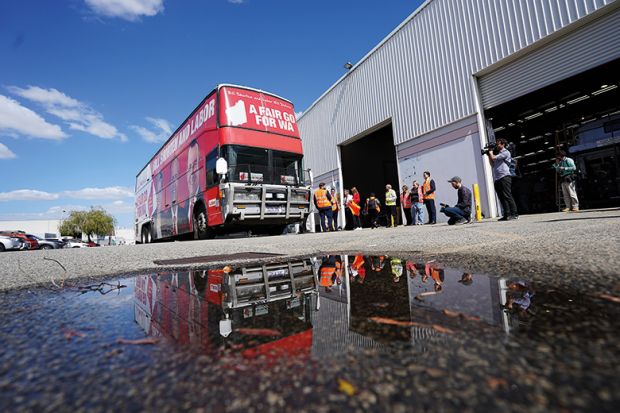Australian universities will benefit overall from an opposition win in next month’s federal election, but financially stressed institutions could be disadvantaged, according to a higher education analyst.
Justin Bokor, a former commercial director with Monash University, said a reinstatement of demand-driven funding – which the Labor Party has committed to if it wins the 18 May poll – would be good for the sector.
“We’d get growth in places and the vibrancy that goes with that, increasing the pool of students from different backgrounds,” Mr Bokor said. “But individual universities struggle in that market, and are likely to struggle if it’s brought back in.”
He said that while funding had increased under the demand-driven system, average university surpluses had declined by over a third and variability in operating margins had increased.
“Universities with weaker positions in the marketplace can lose share, and did lose share last time around,” he said. “Those are the ones that will really suffer.”
While Labor has promised to uncap undergraduate places if it wins the election, it has referred the details to a review of post-school education following the May poll. The party also plans to review the research system and increase R&D spending to 3 per cent of gross domestic product by 2030.
The governing Coalition, which released a de facto election platform via this month’s federal budget, has offered the sector little beyond pre-existing commitments to medical research, enhanced funding for regional higher education – so far, at the expense of general funding streams – and modest increases in teaching grants subject to unspecified performance measures.
Mr Bokor said the Coalition had put higher education in the “too hard basket” after unsuccessful attempts to increase student fees. “It will be more or less status quo if they win,” he said. “But they would probably have to cut the sector further to deliver large tax cuts and budget surpluses they’ve promised.”
He said Labor, which planned to increase revenue through changes to superannuation and property taxation, would be able to “hold spending at higher levels. So a Labor government would be a better outcome for the sector.”
Hannah Forsyth, a historian and higher education specialist with the Australian Catholic University, said a Labor revival of the demand-driven system risked entrenching a dependence on increased student numbers to bankroll improvements to universities.
“My worry is that vice-chancellors may not look at more fundamental things they need to consider in the structure of the system,” Dr Forsyth said. “It’s a problem that universities [have] such heavy reliance on endless growth.”
She said she suspected that a victorious Coalition would like to deregulate student fees – something it had failed to achieve in 2014, when the senate rebuffed the attempt. “If they had enough control of government I have no doubt that they would try that again, which frankly would be a disaster.”
A Labor victory could also resuscitate the Education Investment Fund, a A$3.9 billion (£2.2 billion) nest egg originally intended for research infrastructure. The government wants to quarantine it for victims of natural disasters.
Shadow science minister Kim Carr said his party was “determined” to resurrect the EIF, but stressed that “announcements on particular measures” were still to be made. “Labor will have more to say on research infrastructure, training and collaboration before the election,” he added.
Register to continue
Why register?
- Registration is free and only takes a moment
- Once registered, you can read 3 articles a month
- Sign up for our newsletter
Subscribe
Or subscribe for unlimited access to:
- Unlimited access to news, views, insights & reviews
- Digital editions
- Digital access to THE’s university and college rankings analysis
Already registered or a current subscriber? Login








